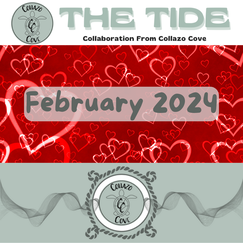|
I don’t know about you, but I love when a new Edutopia newsletter pops up in my inbox. The one I just received includes an article about six evidence-backed tips for scaffolding student learning.
As I was reading the advice, I couldn’t help but think about the perfect tie-in to how we scaffold learning through STEM activities. So here are my STEM takes on the six they discuss in their article.
#1 Clarity
The article describes how you should make sure your instructions and materials are designed to optimize student understanding and learning. When we introduce an engineering activity to students this is so important. Whether we are starting with a foundational picture book, relevant current event, or other hooks, we need to make sure we are walking the students through the process and actions we are expecting, and clearing up any questions they may have prior to beginning. This allows them to see the big picture, sets the tone, and decreases negative behaviors that often come when students are confused or anxious. I always use my guiding slide deck with the same engineering design process (EDP) image to provide clarity and better student understanding. Here’s an example: #2 Build Background Knowledge For me, this is where the IMAGINE step in the EDP is crucial. In addition to children imagining how they will solve a problem, I use this step to show pictures or an effective video related to the challenge to promote discussions and provide that crucial background knowledge that many students may not have. For example, when engineering “boats” for the Who Sank the Boat lesson, many students may not have first-hand experience with what different boats look like. So I share the images below and we talk about the materials, shapes, designs, and purposes of the various boats. This provides at least a small bit of background knowledge prior to the actual challenge. Background knowledge can also be triggered through discussions the class has while reading a foundational picture book!
#3 Be Multi-Modal
Ah, yes! STEM integration’s superpower! By nature, engineering and hands-on science, math, and technology learning are multi-modal. Children are asked to listen to a story, watch a video, or view a demonstration of a phenomenon. They are then tasked with drawing out their plans to solve a problem. Then comes the crucial building, manipulating, experimenting, and/or crafting. And throughout that amazing process, they are continually communicating with their partner or team, sharing results at the end, and in many other ways stating what they have learned. STEM is naturally multi-modal!
#4 Use Graphic Organizers and Anchor Charts
Whether in the regular classroom, the STEM lab, or the media center maker space, graphic organizers and anchor charts provide students with just that…an anchor for all the learning taking place. The Edutopia article states that “In the early stages of learning—as students are grappling with unfamiliar information—it’s helpful to supply prompts, hints, or even partially completed anchor charts and graphic organizers to make learning more effective” In my opinion, when conducting STEM activities, these anchor charts should first be filled with student discoveries, ideas, and conclusions. Then, through class discussion, if misconceptions related to content need to be clarified, additional information can be added. We need to be careful to allow the students to work through failure without the crutch of constant hints or prompts about what WE think they should do. As teachers this is hard; to step back even when we know they are making a mistake or their build won’t work. But this is where the best learning occurs, and building an anchor chart throughout the activity can support that.
#5 Use Pre-Lesson Activities
Although the article focuses on the more traditional content application of providing high-level quiz questions prior to the learning activity, my favorite pre-lesson activity when integrating STEM is reading a relevant well-written picture book, no matter what age the students are (high school students still love picture books!). For great collections of picture books that are fantastic for STEM integration check out my constantly growing Pinterest Board HERE.
#6 Ask Meta-Cognitive Questions
One way I’ve found to keep myself from “helping” students too much during the engineering design process is to ask questions that help them develop their metacognition. Questions/prompts like:
What other ways do you help scaffold STEM activities for your students? I’d love to hear about them! #BetterTogether
0 Comments
Leave a Reply. |
Kim CollazoSTEM Advocate and Picture Book Author Archives
April 2024
Categories
All
|







 RSS Feed
RSS Feed